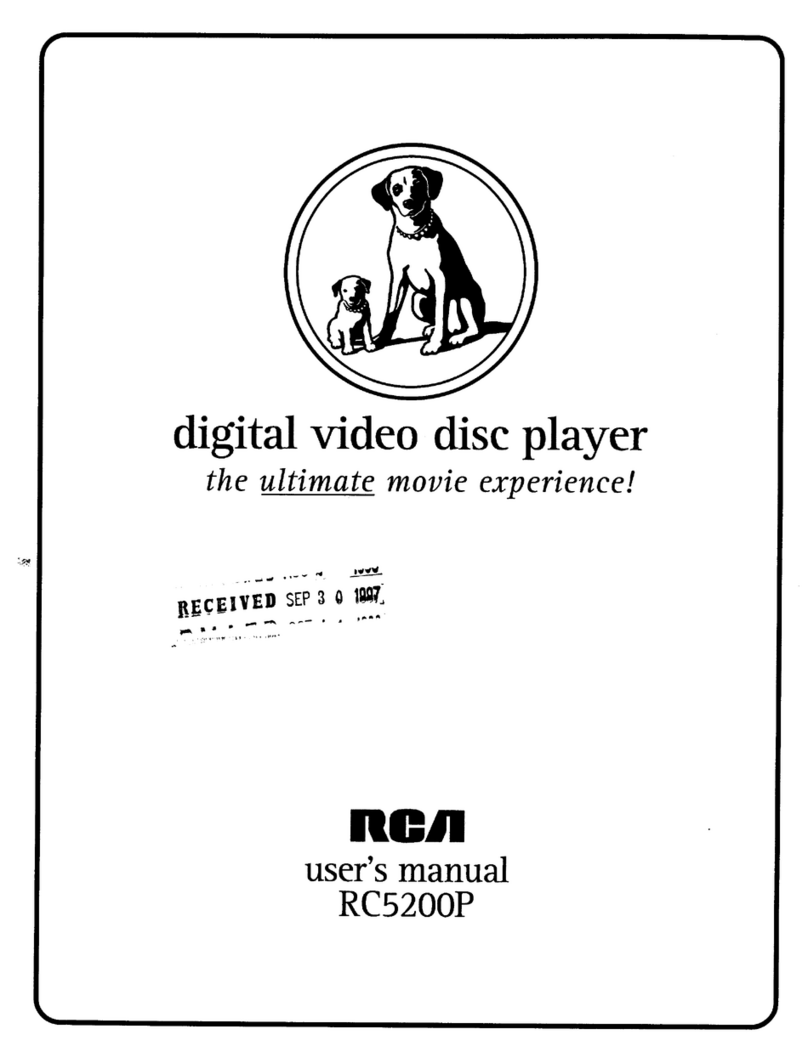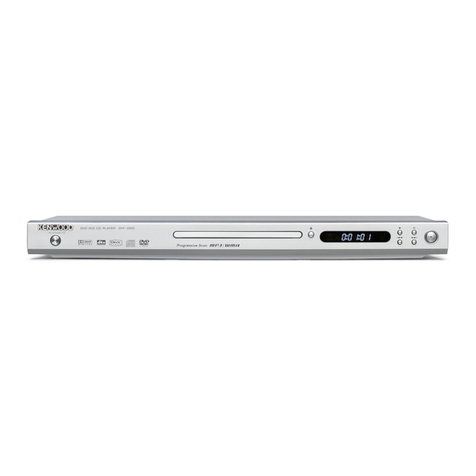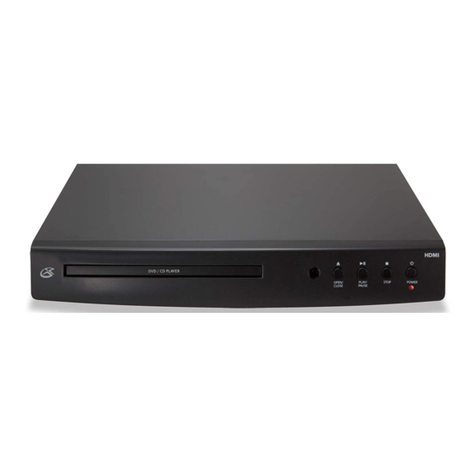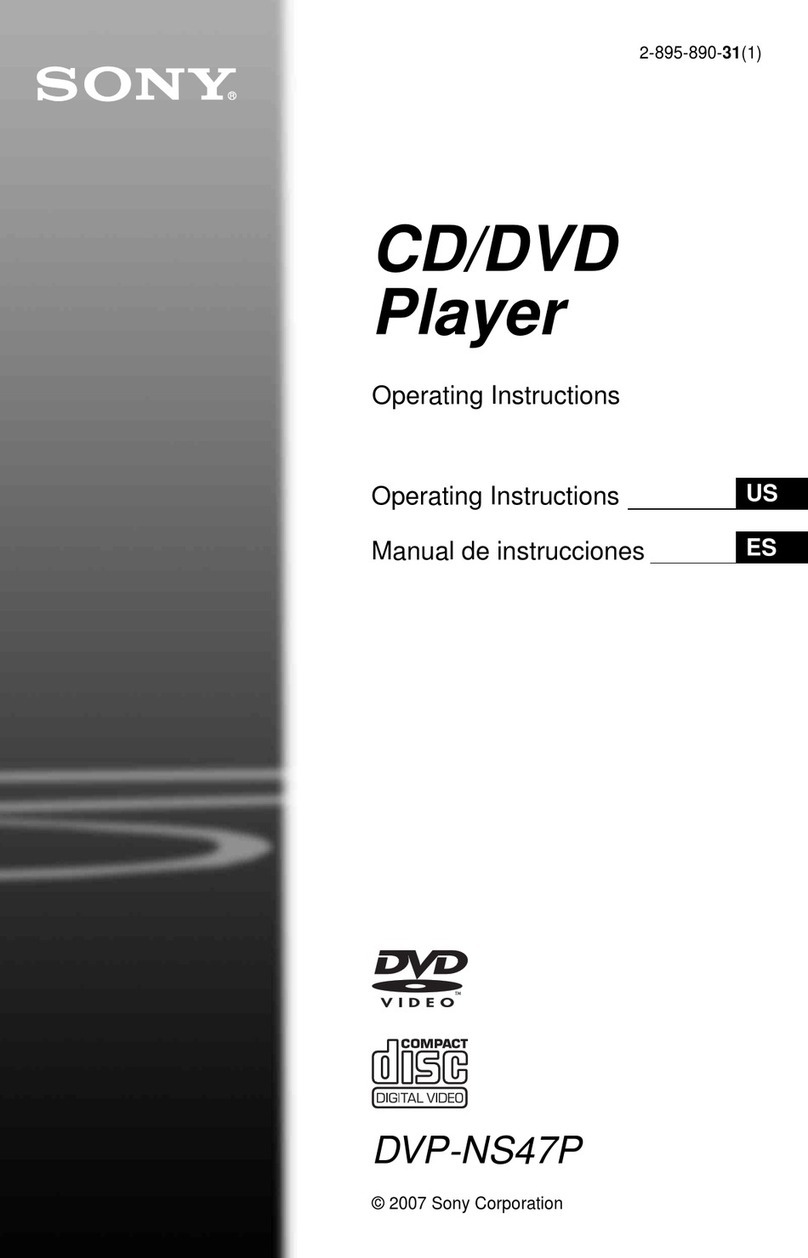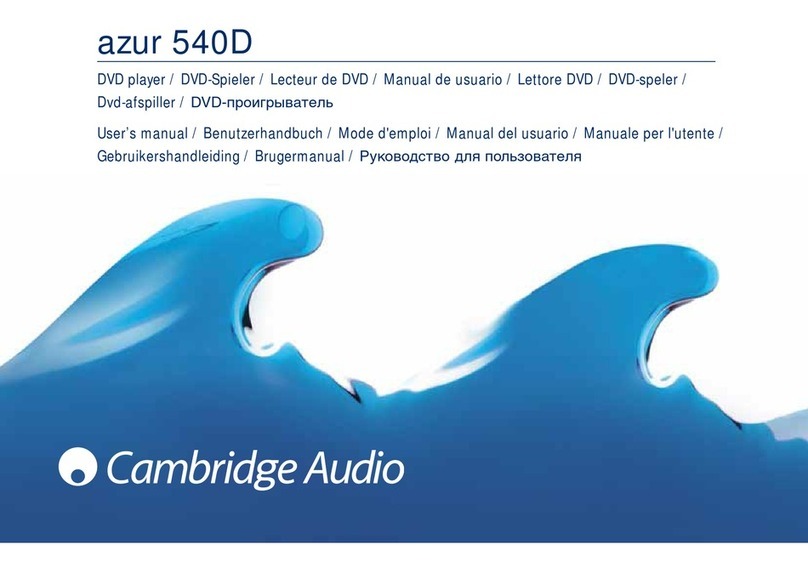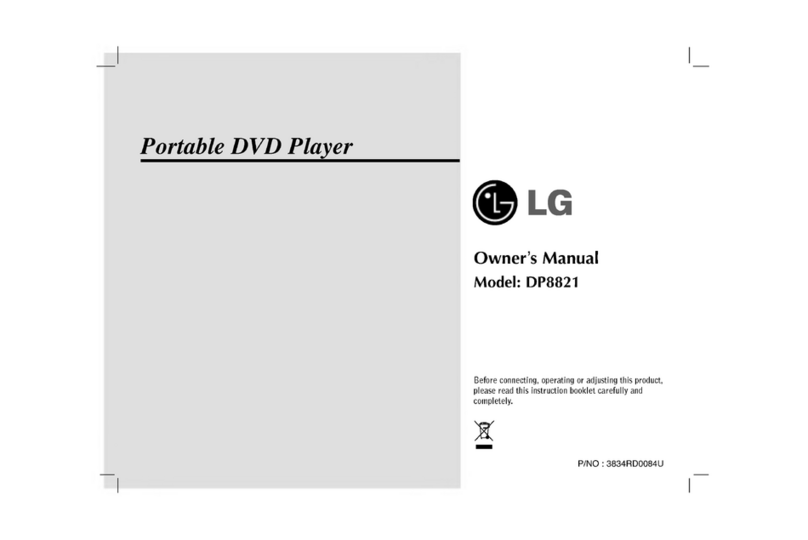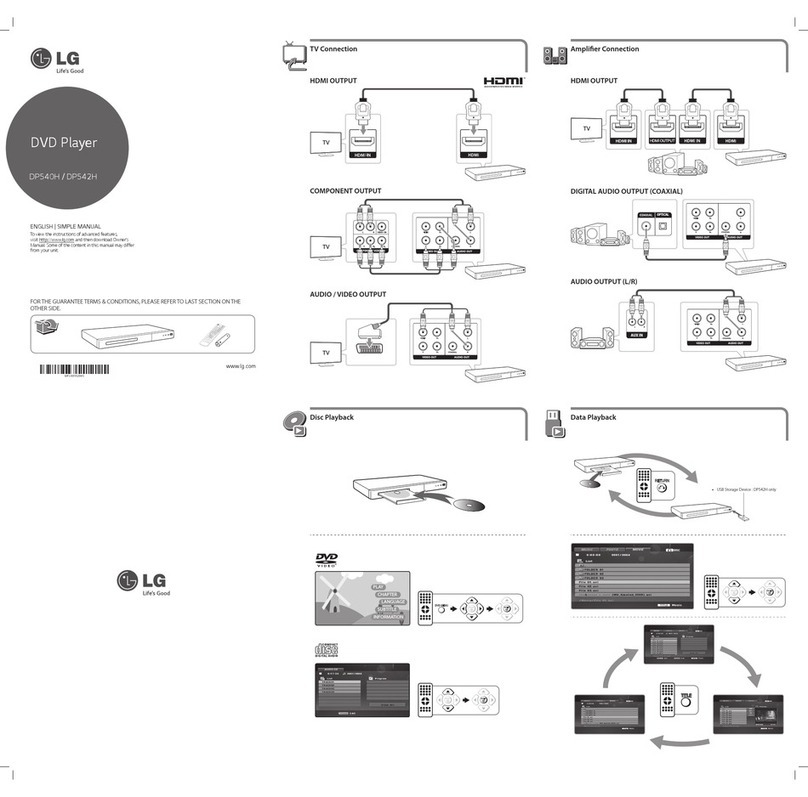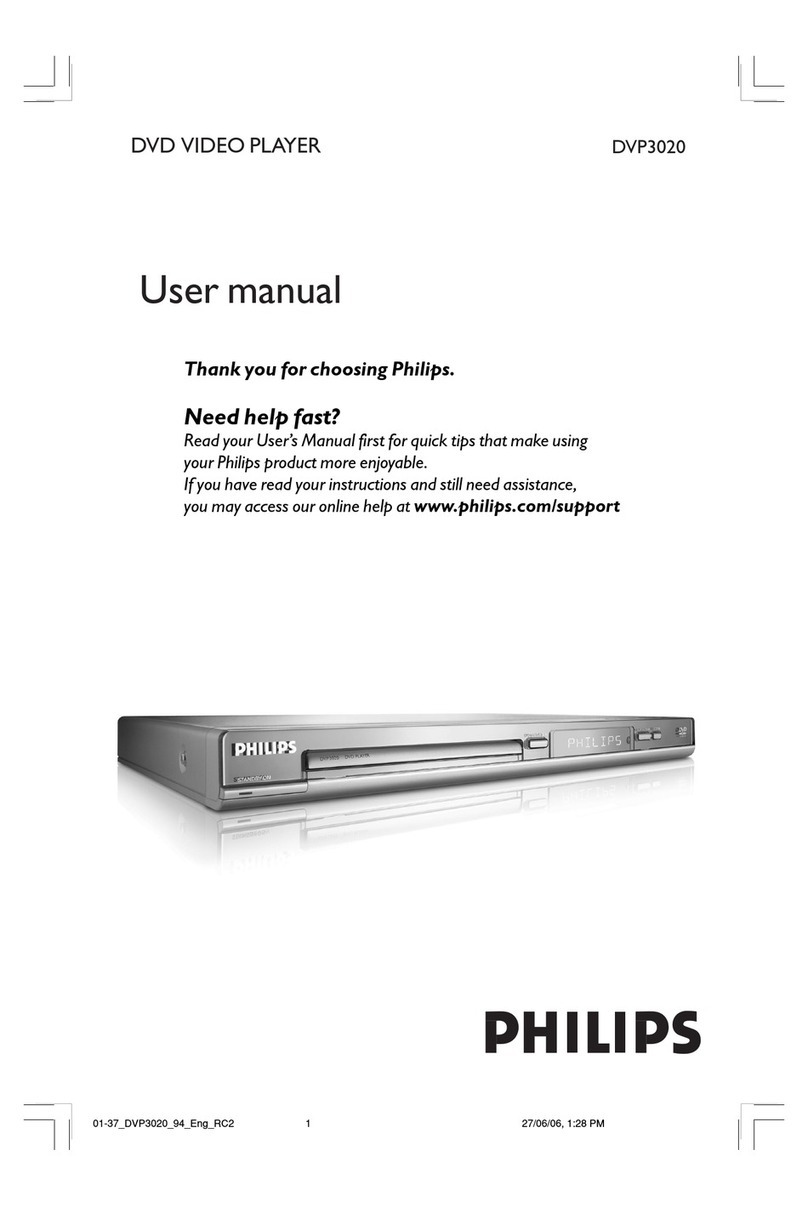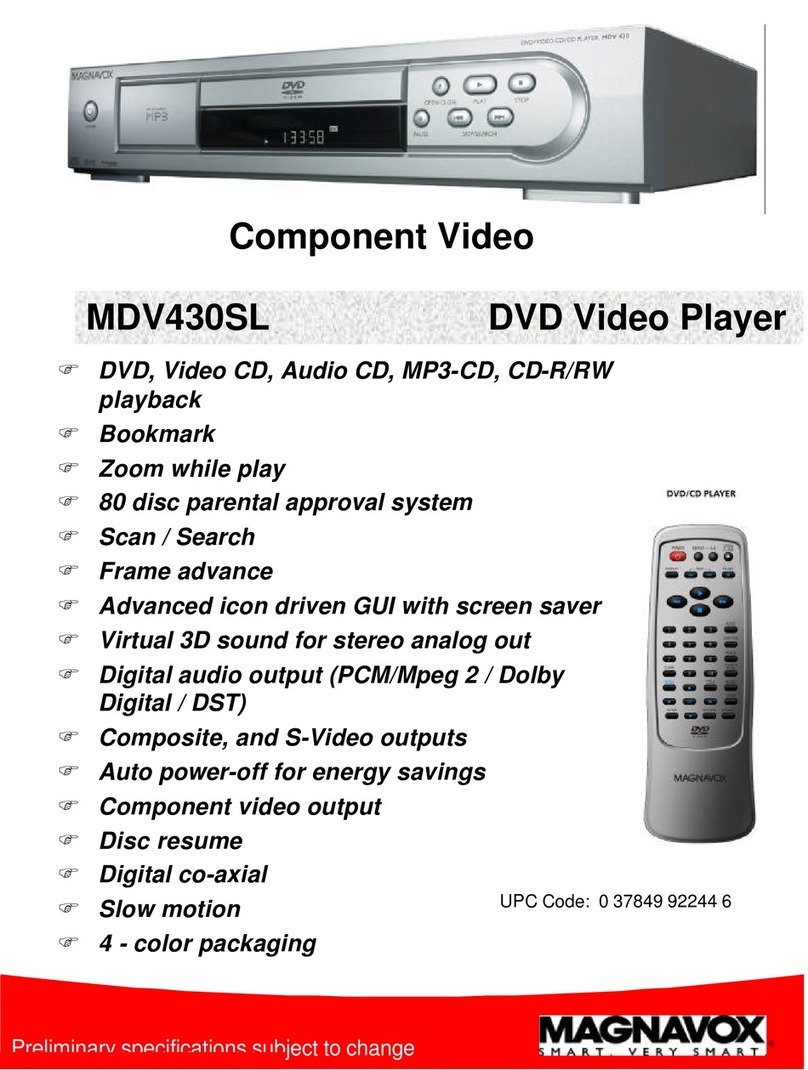Bose AV28 User manual

1
PROPRIETARY INFORMATION
THIS DOCUMENT CONTAINS PROPRIETARY INFORMATION OF
BOSE CORPORATION WHICH IS BEING FURNISHED ONLY FOR
THE PURPOSE OF SERVICING THE IDENTIFIED BOSE PRODUCT
BY AN AUTHORIZED SERVICE CENTER OR OWNER OF THE
BOSE PRODUCT, AND SHALL NOT BE REPRODUCED OR USED
FOR ANY OTHER PURPOSE.
Software Update Information
The software in the AV28 Media center can be updated using a software update CD available from
Bose®service. Refer to procedure 2 on page 70, Console-Key Special Function Features, to
determine the software version of the unit. Contact Bose Service or refer to the Bose service
extranet site for information regarding the latest software revision; click on Lifestyle®music centers
and then AV28 media center. http://serviceops.bose.com
Contents
Safety Information ............................................................................................................................2
Electrostatic Discharge Sensitive (ESDS) Device Handling .........................................................2
Specifications ................................................................................................................................ 3-5
Theory of Operation ................................................................................................................... 6-28
Disassembly/Assembly ............................................................................................................ 29-30
Setting-up a Computer to Issue TAP Commands ........................................................................31
Issuing TAP Commands to the AV28 media center .....................................................................32
General Test Procedure Notes .......................................................................................................32
Functional/Performance Verification Tests ............................................................................. 33-34
Adjustment/Performance Verification Procedures ................................................................ 35-37
Figure 1. AM Test Setup .................................................................................................................... 35
Figure 2. Tap Test Cable Part Number 264565 .................................................................................. 38
Part List Notes .................................................................................................................................38
Main Part List................................................................................................................................... 39
Figure 3. Exploded View .................................................................................................................... 40
Main PCB 260318-0 Electrical Part List ................................................................................... 41-55
Tuner PCB 260322-1 Electrical Part List ................................................................................. 56-60
Head Unit Packaging Part List .......................................................................................................61
Figure 4. Console Packaging ............................................................................................................61
Figure 6. Laser Current Measurement Point ...................................................................................... 62
Figure 5. DVD Player Rear Panel ...................................................................................................... 62
Laser Current Measurement .......................................................................................................... 62
Integrated Circuit Diagrams ..................................................................................................... 63-67
Changing House Codes .................................................................................................................68
Figure 7. House Code Settings .........................................................................................................68
Zone 2 Operation ............................................................................................................................ 69
Figure 8. Zone 2 Remote Control Switch Setting .............................................................................. 69
Console-Key Special Function Features ...................................................................................... 70

2
1. Parts that have special safety characteristics are identified by the symbol on schematics
or by special notes on the parts list. Use only replacement parts that have critical characteristics
recommended by the manufacturer.
2. Make leakage current or resistance measurements to determine that exposed parts are accept-
ably insulated from the supply circuit before returning the unit to the customer. Use the following
checks to perform these measurements:
A. Leakage Current Hot Check-With the unit completely reassembled, plug the AC line cord
directly into a 120V AC outlet. (Do not use an isolation transformer during this test.) Use a leakage
current tester or a metering system that complies with American National Standards Institute
(ANSI) C101.1 “Leakage Current for Appliances” and Underwriters Laboratories (UL) 6500 IEC
60065 paragraph 9.1.1. With the unit switch first in the ON position and then in OFF position,
measure from a known earth ground (metal water-pipe, conduit, etc.) to all exposed metal parts of
the unit (antennas, handle bracket, metal cabinet, screw-heads, metallic overlays, control shafts,
etc.), especially any exposed metal parts that offer an electrical return path to the chassis. Any
current measured must not exceed 0.5 milliamp. Reverse the unit power cord plug in the outlet and
repeat test. ANY MEASUREMENTS NOT WITHIN THE LIMITS SPECIFIED HEREIN INDICATE
A POTENTIAL SHOCK HAZARD THAT MUST BE ELIMINATED BEFORE RETURNING THE
UNIT TO THE CUSTOMER.
B. Insulation Resistance Test Cold Check-(1) Unplug the power supply and connect a jumper
wire between the two prongs of the plug. (2) Turn on the power switch of the unit. (3) Measure the
resistance with an ohmmeter between the jumpered AC plug and each exposed metallic cabinet
part on the unit. When the exposed metallic part has a return path to the chassis, the reading
should be between 2 and 5.2 Megohms. When testing 3 wire products, the resistance measured to
the product enclosure should be between 2 and infinite Meg ohms. Also, the resistance measured
to exposed output/input connectors should be between 4 and infinite Meg ohms. When testing 2
wire products, the resistance measured to exposed output/input connectors should be between 4
and infinite Meg ohms. If it is not within the limits specified, there is the possibility of a shock haz-
ard, and the unit must be repaired and rechecked before it is RETURNED TO THE CUSTOMER.
ELECTROSTATIC DISCHARGE SENSITIVE (ESDS) DEVICE HANDLING
This unit contains ESDS devices. We recommend the following precautions when repairing,
replacing or transporting ESDS devices:
• Perform work at an electrically grounded work station.
• Wear wrist straps that connect to the station or heel straps that connect to conductive floor mats.
• Avoid touching the leads or contacts of ESDS devices or PC boards even if properly grounded.
Handle boards by the edges only.
• Transport or store ESDS devices in ESD protective bags, bins, or totes. Do not insert unpro-
tected devices into materials such as plastic, polystyrene foam, clear plastic bags, bubble wrap or
plastic trays.
SAFETY INFORMATION

3
Specifications
Physical Description:
Dimensions: 15.8" W x 11.0" D x 3.5" H (40.1 x 27.9 x 8.9 cm)
Weight: 8.2 lbs. (3.7 kg)
Cover: Aluminum
Base: Molded plastic
Display: Vacuum fluorescent
Inputs:
TAPE: 2 Vrms, maximum
AUX: 2 Vrms, maximum
VCR: 2 Vrms, maximum
TV: 2 Vrms, maximum
Digital: S/PDIF (1 each for TV, VCR, TAPE, and AUX)
Composite video: NTSC or PAL format 1Vpp with sync 75 Ohm
S-Video: Luminance 1Vpp, chrominance 0.3Vpp
Component video: NTSC or PAL 1Vpp with sync on Y
Optical input: S/PDIF digital, mapped to input
FM antenna: 75 Ohm
AM antenna: 12uH
TV sensor: NTSC/PAL/HDTV/480p compatible
Power: 33 Vdc, 2.1mm jack, provided by DCS91 power pack
Serial data port: 3.5mm miniature stereo jack, data in/out
Remote control receiver: RF or IR, user selectable
Outputs:
Speaker Zone 1: S/PDIF and variable analog
Speaker Zone 2: S/PDIF and variable analog
Record L and R: Fixed audio
Record digital: S/PDIF and Optical
Optical output: S/PDIF, -15 to -21 dBm
Composite video: NTSC or PAL 1Vpp with sync 75 Ohm
S-Video: Luminance 1Vpp, Chrominance 0.3Vpp
IR: Controls other manufacturer's IR operated devices,
universal method
FM Tuner:
Tuning range: 87.7 MHz-107.9 MHz
De-emphasis: 75 usec
Channel spacing: 200 kHz
Sensitivity, mono usable: 13 dBf
Stereo, 50 dB quieting: 38 dBf
Signal-to-noise @ 65 dBf: Mono: 74 dBf, Stereo: 70 dBf
Noise ratio @ 65 dBf: Mono: 85, Stereo: 85
Harmonic distortion, 1 kHz, @ 65dBf Mono: 0.3%, Stereo: 0.4%
Capture ratio @ 45 dBf: 2.0 dB
AM rejection @ 45 dBf: 60 dB
Adjacent channel selectivity, 200 kHz,
for both channels, @ 45 dBf:
13 dB
Alternate channel selectivity, 400 kHz,
for both channels, @ 45 dBF:
70 dB
Image rejection: 45 dB
RF inter-modulation: 65 dB
Sub-carrier product rejection @ 65 dBf: 55 dB
Frequency response 30 Hz-15 kHz: +1.0 dB
Stereo channel separation @ 1 kHz: 35 dB
Auto stop level (seek): 30 dBf
Mono/Stereo threshold: 40 dBf

4
Specifications
AM Tuner:
Channel spacing: 10 kHz
Test Parameter Condition 530-
550
kHz
560-
590
kHz
600-
700
kHz
710-
950
kHz
960-
1400
kHz
1410-
1610
kHz
1620-
1710
kHz
Nominal 55525049484747
Ambient
Limit
61 57 55 55 53 52 52
Usable
Sensitivity1,
dBuV/m
Environmental
Limit
67 63 61 60 59 58 58
Nominal 26262723232522Adjacent
Channel
Selectivity2, dB
AmbientLimit21212218182017
Nominal 30303030302927Alternate
Channel
Selectivity2, dB
AmbientLimit25252525252422
Nominal 35374040404040Image
Rejection
Ratio, dB
AmbientLimit30323535353535
Nominal 50505050505050
AmbientLimit45454545454545
Signal to Noise
Ratio, dB
Environmental
Limit
40 40 40 40 40 40 40
Nominal 0.6 0.6 0.6 0.6 0.6 0.6 0.6
Ambient
Limit
1.4 1.4 1.4 1.4 1.4 1.4 1.4
Distortion, %
Environmental
Limit
2.0 2.0 2.0 2.0 2.0 2.0 2.0
Nominal -3-3-3-3-3-3-3Frequency
Response, dB
@ 220 Hz, 2.0
kHz
AmbientLimit-6-6-6-6-6-6-6
Auto Stop
Level, dBuV/m
70 ± 7 65 ± 7 63 ± 7 60 ± 7 54 ± 7 48 ± 7 48 ± 7
Single disc CD/DVD:
Supported formats: DVD video, Audio CD, CD-R, CD-R/W, MP3 CD
CD performance:
Parameter Nominal Limit Test Disc
Defect Tracking (void) 1.0 mm 0.8 mm ABEX test disc TCD-725A
Defect Tracking (black dot) 1.0 mm 0.8 mm ABEX test disc TCD-725R
Defect Tracking (scratch) 1.6 mm 1.0 mm ABEX test disc TCD-721 R
Defect Tracking
(finger print)
75 mm 65 mm ABEX test disc TCD-725R
Defect Tracking
(warped disc)
1.0 mm 0.7 mm ABEX test disc TCD-732RA
Defect Tracking
(eccentric disc)
210 mm 140 mm ABEX test disc TCD-714R
Cueing Time 2 sec 3 sec Phillips TS4, tracks 1-15

5
Specifications
Analog Inputs:
Input level: Full scale output; 2 Vrms maximum, 200 mVrms
Input impedance: 33 k
Input coupling: AC coupled
Analog Outputs:
Output level: 2 Vrms
Output level from FM: 0.6 Vrms
Output level from AM: 0.4 Vrms
Source impedance @ 1 kHz: 220 Ohms
Load impedance: 10 k, 2 k minimum
Output coupling: AC coupled
Headphone Jack:
Connector: Mini stereo jack
Output level: 31 mW at THD <0.15% into a 32 Ohm load
Electrical S/PDIF Input:
Sampling rates accommodated: 32 kHz, 44.1 kHz, 48 kHz
Bits recognized and accepted: 16, 20, 24
Input impedance: 75 Ohms
Input coupling: AC coupled
Optical S/PDIF Input:
Sampling rates accommodated: 32 kHz, 44.1 kHz, 48 kHz
Bits recognized and accepted: 16, 20, 24
Connector: TOSLINK
Electrical/Optical S/PDIF Output:
Sampling rates accommodated: 32 kHz, 44.1 kHz, 48 kHz
Protocol: SDMI (Secure Digital Music Initiative)
Remote Control:
Range: 65 ft (20m)
RF frequency: 27.145 MHz

6
Theory of Operation
PCB Assembly P/N
Main PCB 260318-0
IR PCB Part of 260318-0
Headphone PCB Part of 260318-0
Tuner PCB 260322-1
Keypad PCB 254141
1.0 Overview
The AV28 media center is a self-contained DVD/CD/MP3 disc player with an AM/FM tuner for use
with Bose®powered speaker systems. In addition to the two internal sources (DVD/CD and AM/
FM tuner), it allows playing up to four external audio sources: TV, VCR, AUX, and TAPE. A 27MHz,
one-way RF remote control operates the unit without line-of-sight restriction; provisions for infrared
remote control of the media center also exist. An integrated IR Blaster allows limited control of
other manufacturer’s equipment (TV’s, VCR’s and Cable/Satellite Set-Top boxes). The AV28 media
center has two independent audio output zones, accessible through circular DIN connectors in the
back of the product.
The AV28 media center contains five PCBs:
There are some components shown on schematics whose reference designators end in –NV;
these components are not loaded by manufacturing, but their pads exist on the PCB.
Block Diagram
U1
CS9800
DVD Decoder IC
Flash
VFD
DVD ROM
Drive
IR Blaster
Board
TV Power
Dongle
Power
Supply
Synch
IR
Receiver Console
Buttons
UEI
Blaster IC RF Remote
XCVR
Audio Path Power
Supply
ETAP
ATAPI
CCB Bus
Power Fail
DRAM
Video Path
AM / FM
Tuner

7
Theory of Operation
Voltage Type PCB Location
(schematic page)
Input Outputs
+33 Linear Power Pack 120VAC +12V, +5.1V, +3.3V
+12 Switching Tuner (3) V_RAW DVD drive, VFD, +10V
+10 Linear Tuner (3) +12 Tuner, Transceiver, Audio path, +8V
+8 Linear Main (9) +10 Video circuits
+5.1 Switching Main (9) V_RAW DVD drive, Audio path, +3.3
+3.3 Switching Main (9) V_RAW Flash, DRAM, U1 I/O & core, misc. logic
+2.5 Linear Main (9) +3.3 U1 PLL circuits
2.0 Power Supply Electronics
2.1 Architecture
V_RAW is provided to the console by an external power pack and is approximately 33VDC. The
power pack is a linear transformer. In addition to the usual large capacitor and full-bridge diode
rectifier, a PTC thermistor (effectively a reset-able fuse) is contained in the power pack to protect
the unit under fault conditions. V_RAW enters the console on the tuner PCB, passes through an
NTC thermistor to eliminate power supply startup surges, and is fed to the +12V supply and the
flat-flex cable, which feeds it to the +5.1V and +3.3V supplies on the Main PCB.
Power Supply Block Diagram
2.2 Switching Power Supplies
See SD254135 sheet 9 and SD256131 sheet 3 for the power supply circuits.
The switching power supplies are ST L4973D3.3 regulator ICs (U802 and U803 on the Main PCB,
and U301 on the Tuner PCB). The power supplies are designed as step-down Buck converters.
The voltage fed back to the chip on pin 13 determines the output voltage; the chip’s control circuitry
will work to keep this voltage at +3.3V. The +5.1V and +12V supplies use resistor divide-down
networks to obtain the +3.3V feedback voltage.
The reference designators discussed in this section correspond to the +12V regulator on the tuner
board; the designs of the +5.1V and +3.3V regulators are nearly identical. A number of additional
components exist to provide filtering functions.
+33V
DCS
9X
Linear
+12V
SMPS
+5.1V
SMPS
+3.3V
SMPS +2.5V
Linear
+10V
Linear +8V
Linear
AC line
voltage
from wall

8
Theory of Operation
2.3 Supply Synchronization Generator
To limit radiated noise, all three switching supplies (12V, 5V and 3.3V) are synchronized to the
same control frequency. This frequency is varied by U1, as needed, to keep noise out of the AM
tuner.
U805 is a 74HC592 8-bit binary counter IC with an input register. An 11.2896 MHz clock signal is
fed to the counter clock (CCK) pin, and the chip counts on positive edges of this signal. Inputs A
through H are loaded to the register on positive edges of the register clock (RCK) signal, and the
register outputs are loaded to the counter when the active-low counter load (/CLOAD) is asserted.
These two signals are driven by the chip’s own active-low ripple carryout (/RCO), which is also the
output to the level shifter circuit. The active-low counter clock enable (/CCKEN) is pulled low by a
100 Ohm resistor, and the active-low asynchronous counter clear (/CCLR) is tied to the Main
PCB’s hardware reset line. The /RCO output is fed to a level shifter circuit (Q801 and Q804).
The synchronization clock is fed to all three switching power supply regulators in the console. The
clock frequency will be either 98.1704 kHz or 101.7081 kHz, depending on the state of
SUPPLY_FREQ_SEL, driven by U1. U1 picks the state based on AM tuner frequency.
2.4 Power Fail Detection
Q802 and Q803 detect a power failure by asserting the active-low /POWER_FAIL signal when the
console input voltage V_RAW falls below a given threshold (equivalent to an AC line voltage of
about 75 VACRMS). This signal is fed to U1 as an interrupt so the micro can perform some shut-
down functions before it is held in reset; see section 3.1.2 for additional information.
2.5 Grounding
R321 on the Tuner PCB connects PGND (the ground provided to the product by the power pack)
and GND (tuner signal ground). The power supply ground on the Main PCB is connected to GND
only at C832 and C828.
Additional signal ground connections between the Main and Tuner PCBs and between the PCBs
and the conductive paint on the plastics are made by conductive gasket material attached to the
plastic cover and base.
IC Pin Components Connected Pin Function
1 R301, C302, C303 Sets switching frequency (when not controlled
externally)
10 C308 Drives internal D-MOS
11 R322 Inhibits supply
12 R302, C305, C307 Lead-lag filter for compensation loop
13 R304, R305 Voltage feedback for control
18 C304 +5.1V for external reference
19 C306 Sets supply soft-start time constant
20 None Supply frequency switching synchronization
(see note)

9
Theory of Operation
2.6 Troubleshooting
Verifying functionality of the power supply system by measuring the DC levels on each supply
(including the power pack) is sufficient for basic troubleshooting.
If power supply problems are suspected, or if DC levels on the supplies are incorrect, evaluate
and correct these parameters with no power applied:
•Check continuity between J104 and pin 8 of each supply.
•Measure the resistance of R321 on the Tuner PCB.
•Measure the resistance of feedback resistors (R304 and R305 in the +12V supply) in each supply.
•Verify that no supply voltage output is shorted to ground.
3.0 Control Electronics
The majority of the control electronics are located on the Main PCB, the notable exceptions being
the Infrared Blaster diodes and receiver module (located on an auxiliary PCB under the DVD-ROM
drive tray) and the RF transceiver circuitry (located on the Tuner PCB).
3.1 Processor
U1 is a CS98000 DVD decoder IC that also functions as the media center’s main processor.
U1 contains two built-in 32-bit RISC processors, a DSP core, a memory interface which supports
SDRAM and FLASH ROM, an ATAPI interface, a DMA controller, an MPEG video decoder, on-
board data and instruction caches, a digital video interface, digital audio processing, a general
purpose interface, and numerous general-purpose I/O.
One RISC processor in U1 (RISC0) manages the ATAPI interface to the DVD-ROM drive, and
handles all low-level details associated with playback/navigation of DVD and CD discs. RISC0
sends standard ATAPI control commands to the drive and receives MPEG-compressed audio,
video, and control information back. It decodes the MPEG information from the DVD-ROM drive on
the ATAPI bus and stores the decoded video into SDRAM for later readout to the video interface. It
also oversees the onboard DSP core, as required, when decoding digital audio data, and sends it
out the digital audio interfaces.
The second RISC processor (RISC1) runs Bose®software that handles system control, as-
sembles VFD and On-Screen Display (OSD) information, and controls I/O functions including
reading the console buttons, receiving the RF and IR remote control commands, driving the OSD
and VFD display on the console, controlling the AM/FM tuner sub-circuit, and driving the IR blaster
controls.
Connections to U1 are made throughout SD254135.

10
Theory of Operation
3.1.1 Processor Clock
U1 is clocked by a crystal inverter-oscillator whose nominal frequency is 27 MHz.
A 10KW resistor (R713) biases one gate of U701, a 74VHCU04 [high-speed, unbuffered] inverter.
The crystal in the inverter’s feedback path is designed for a 22pF load, achieved by the series
combination of the two 30pF load capacitors C704 and C707 and other stray capacitance in the
input gates of U1. R714 sets the pole in the oscillator’s loop response, and R715 buffers the output
between the oscillator and U1. See sheet 8 of SD254135.
After the signal is buffered by U1, the 27 MHz clock drives the video circuitry. Frequency accuracy
within ±50ppm of this oscillator circuit is necessary for color video operation.
3.1.2 Processor Reset
U703 generates a 140ms reset pulse at power-on and any time the +3.3V supply dips below 2.93
volts (corresponding to an AC line voltage of about 40VACRMS. The pulse is buffered by two of
the gates of U701, a 74VHCU04 inverter, and distributed as active-low /RESET1. The reset signal
ensures reliable startup of U1 at power-up and after a brownout.
See the comments in section 2.4 regarding power-fail detection.
3.2 Memory
See sheet 1 of SD254135.
The U1 memory interface supports both SDRAM and flash memory of various sizes. Both memory
ICs are connected to the same bus, and a chip select chooses between the two devices. The type
of memory cycle that is run depends on which address space is needed.
3.2.1 FLASH
U2 is a 1-megaword by 16-bit Flash memory IC. FLASH memory is nonvolatile, meaning that its
stored data is not lost when the chip loses power. The FLASH is used to store all application
software for the product (including software to run on both of U1’s RISC processors and its DSP).
This software is programmed into the FLASH by Manufacturing during In-Circuit Test. The FLASH
also stores nonvolatile user parameters, such as AM/FM presets and OSD setup preferences.
U2 shares the memory address and data bus with U3, but its cycle is different from the SDRAM:
flash access is asynchronous and does not use a memory clock. Address (pins 1-9, 18-24, and
48) and chip select (pin 26) is presented to the chip, and data appears 1 access time later on the
data bus. The flash chip only supplies 16-bit data to U1; the other data bus lines are not driven
during flash access.
U2 can be programmed in-circuit by U1; this allows media center software updates in the field via
CD-ROM. During reprogramming, the new program is held in SDRAM (along with the operating
program) until checksum-verified, then written permanently to FLASH.

11
Theory of Operation
3.2.2 SDRAM
U3 is a 2-megaword by 32-bit synchronous dynamic random access memory (SDRAM) IC. When
the media center powers-up, the application program from the FLASH is shadowed into and ex-
ecuted out of the SDRAM to improve speed. The SDRAM is also used to hold blocks of com-
pressed and decompressed audio and video data, as well as numerous variables and flags, as
required by the software.
For SDRAM accesses, a memory clock of about 100 MHz that synchronizes data access is sent
to the chip at pin 68. Data commands for accesses are coded in the /RAS and /CAS signals (pins
18 and 19), and data read/write selection is done by the /WE signal (pin 17). The address to be
written or read is given on the address bus (pins 25-27 and 60-66). The 32-bit data bus contains
the word to be written or read after the pipeline delay of the memory chip.The detailed operation of
the SDRAM is outside the scope of this document.
3.3 Remote control
3.3.1 RF Transceiver
See sheet 2 of SD256131.
The AV28 media center RF transceiver operates at 27.145 MHz using on-off keying (OOK). The
RF transceiver circuits are located on the Tuner PCB. The antenna for the RF transceiver system
is the DC power cord attached to J104; a 10mH inductor in the power pack facilitates transmission
and reception over the zip cord. The RF signal is capacitively coupled to the V_RAW line by C214.
3.3.1.1 Receiver
The remote control receiver module is an AM receiver; it takes the RF signal from the antenna line,
demodulates it, and outputs the received data to the data slicer circuit. U104, an LM393 dual
comparator, acts as a data slicer and outputs TTL-level signals for the received data waveform.
The RF_DATA_RCV output line connects to U1 through J103.
3.3.1.2 Transmitter
The AV28 media center contains a transmitter for future bidirectional remote control operation.
Q202 and Y201 form a crystal oscillator that is powered when the XMIT/RCV_SEL line from U1 is
high. The output of the oscillator is fed to Q205, a Class-C RF amplifier. Data is sent on the trans-
mitter by way of the RF_DATA_XMIT line from U1, which powers the amplifier. The amplifier’s
output is fed through a tank circuit and the filtering network.
3.3.1.3 Filtering network
Passive components on the V_RAW line provide filtering for the RF remote signal: L203, C218, and
C217 form a 27.145 MHz notch; L205, C219, and C216 form a 45.290 MHz (second harmonic of
27.145 MHz) notch. C222, C223, and C224 aid in limiting undesired radiated emissions. FB1 is a
ferrite bead designed to improve tuner performance by limiting radiated self-noise in the FM band.

12
Theory of Operation
3.3.1.4 RF Remote Control
The RF remote control contains a similar transmitter to the one described in section 3.3.1.2. The
remote’s DIP switch functions are as follows:
Switches 1-4: 4-bit House Code. All AV28 media centers are shipped set to respond to House
Code 0000 (switches 1-4 all down).
To change the House Code of an AV28 media center, do the following:
1. Turn it OFF using the ALL OFF button on the media center.
2. Press and hold the STORE button on the console.
3. While holding the STORE button, press any button on an RF remote set for the desired House
Code. When the AV28 receives this RF message, it will adopt the new House Code as its own.
Switches 5-6: 2-bit Zone Code. If switch 6 is up, the remote will control Zone 1. If switch 5 is up, the
remote will control Zone 2. If BOTH switches are up, the remote will control BOTH zones.
Switches 7-9: 3-bit Room Code. The AV28 is capable of controlling up to 7 speakers in each zone.
Each speaker has a 3-bit Room Code. Zone 1, Room A (000) is defined as the primary room (the
console buttons will also control this room), and is the Room Code set as a default on all LS28/35
bass module speakers shipped with the AV28. To control the media center’s variable analog out-
puts, the RF remote control needs to be set for Room G (110).
3.3.2 Infrared Transceiver
The AV28 media center contains a built-in IR Blaster capable of sending control commands out the
black lens along the bottom front of the product to other manufacturers’ A/V equipment. Similarly,
an IR receiver is built-in which allows the media center to be controlled by any IR remote control
capable of sending Bose AV28 control commands.
3.3.2.1 Infrared Blaster IC
The IR Blaster IC (U704) is an 8-bit microcontroller located on the main board, sold by UEI elec-
tronics. The IC is pre-programmed with an extensive set of IR control commands for a number of
other manufacturers’ devices. Devices able to be controlled are limited to TV’s, VCR’s, Cable Set-
Top Boxes and Satellite Set-Top Boxes. Over one hundred manufacturers are represented, cover-
ing the U.S./North American, European, South American and Asian markets. To enable sending IR
control commands, the user must select the desired Manufacturer and Device Codes from lists in
the OSD System Setup menus.
Additionally, the AV28 is capable of “teaching” an IR learning remote the commands required to
control the media center. When the user enables the Transmit IR function in the System Setup
OSD menu, the AV28 will automatically echo all received RF remote control messages out its IR
Blaster in Bose AV28 IR format. An IR learning remote can then be taught to control the AV28 by
holding it near the front of the media center as the user presses the desired RF buttons.

13
Theory of Operation
3.3.2.2 Infrared Blaster Diodes
Four diodes located on the IR PCB transmit infrared messages to external A/V equipment. U704
provides the modulated data for the diodes; Q703 and Q706 supply the +5V drive voltage, and
R729 and R730 on the Main PCB limit the IR transmit current (setting the transmit brightness).
3.3.2.3 IR Emitter
For situations where the position of the AV28 does not allow its built-in IR Blaster signals to prop-
erly control an external product, a supplemental IR Emitter “dongle” can be plugged into the back of
the media center and pointed more directly at the equipment in question. This “dongle” is essentially
a combination cable and IR-transmitter diode, and plugs into the jack labeled “IR Emitter (J704).”
Q703/Q705 provide the +5V drive voltage for the dongle, and R739/R740 limit the drive current to
about 50mA.
3.3.2.4 Infrared Receiver Module
The IR PCB contains an infrared receiver module. This module allows the media center to be
controlled by any IR remote control capable of sending Bose®AV28 IR commands (NOTE: Re-
ceive IR needs to be enabled via the System Setup menus in the OSD first, however). The Main
PCB supplies +5.1V to the module. The module performs light filtering functions, optical to electrical
conversion, demodulation about a 38-kHz carrier, and level shifting to provide TTL-level outputs to
U1. The plastic housing surrounding this area is translucent to infrared. Infrared control must be
enabled in the OSD to be functional.
3.3.2.5 Infrared Troubleshooting
During the Power-On Self-Test (POST) phase, the console attempts a query of the IR Blaster IC
and an infrared loopback test; TAP query and the console keypad provide access to test results.
If the IR Blaster IC query fails, concentrate troubleshooting efforts on U704 on the Main PCB.
Symptoms of successful queries to the IR Blaster IC and failed loopback tests require trouble-
shooting of the IR PCB. First, verify cable placement and integrity. Verify basic receiver module
functionality by injecting an infrared signal (for example, a Bose Wave Radio remote) and measur-
ing pin 3 of J1000 on an oscilloscope. To test basic transmitter functionality, verify diode conduction
and orientation, then issue TAP commands to control a Bose Wave Radio.
Troubleshooting customer complaints regarding control integration exceeds the scope of this
document.

14
Theory of Operation
3.3.2.6 IR Key Codes
The following table describes the key codes capable of being generated by the built-in UEI Blaster
chip:
Note: No IR sent.
TV CBL SAT VCR
Key
Code
#
Function Name TCS V
1 Power / Standby Power,
Standby
Power,
Standby
Power,
Standby
Power,
Standby
2 Digit 1 Digit 1 Digit 1 Digit 1 Digit 1
3 Digit 2 Digit 2 Digit 2 Digit 2 Digit 2
4 Digit 3 Digit 3 Digit 3 Digit 3 Digit 3
5 Digit 4 Digit 4 Digit 4 Digit 4 Digit 4
6 Digit 5 Digit 5 Digit 5 Digit 5 Digit 5
7 Digit 6 Digit 6 Digit 6 Digit 6 Digit 6
8 Digit 7 Digit 7 Digit 7 Digit 7 Digit 7
9 Digit 8 Digit 8 Digit 8 Digit 8 Digit 8
10 Digit 9 Digit 9 Digit 9 Digit 9 Digit 9
11 Digit 0 Digit 0 Digit 0 Digit 0 Digit 0
12 Enter Channel Enter Channel Enter Channel Enter Channel Enter
13 -/-- , / 10+ -/--, 10+ -/--, 10+ -/--, 10+ -/--, 10+
14 Previous
Channel
Previous
Channel
Previous
Channel
Previous
Channel
Previous
Channel
15 20+ 20+ 20+ 20+ 20+
16 Channel Up /
Program Up
Channel Up Channel Up Channel Up Channel Up
17 Channel Down /
Program Down
Channel Down Channel Down Channel Down Channel Down
18 TV/VIDEO TV/VIDEO A/B TV/DSS,
TV/SAT
TV/VCR
19 Input---- ---- ---- Input Select
20 Play ---- ---- ---- Play
21 Stop ---- ---- ---- Stop
22 Fast Forward ---- ---- ---- (Search)
Forward
23 Rew ---- ---- ---- (Search)
Reverse
24 Pause ---- ---- ---- Pause
25 Guide Guide Guide Guide ----
26 ExitE xit Exit Exit ----
27 SelectS elect Select Select ----
28 Up Up Up Up ----
29 Down Down Down Down ----
30 LeftL eft Left Left ----
31 RightRi ght Right Right ----
32 Record ----- ----- ----- Record

15
Theory of Operation
4.0 Audio Electronics
The AV28 is a 2-Zone audio system, meaning that users can simultaneously listen to one audio
source in one room and a second audio source in another. Therefore, much of the audio path
hardware is split into two sections: Zone 1 hardware and Zone 2 hardware.
Furthermore, the media center outputs each zone’s audio content in two different forms: analog
and digital. The analog outputs are standard left/right, 2Vrms (max) signals similar to those found
on past Bose®products. Some of these outputs are variable level, with volume control cells in
series with them. Other analog outputs are fixed level, and remain at the 2Vrms (max) level, re-
gardless of the user’s volume setting. Examples of variable outputs would be the headphone
outputs and the analog left/right signals on the Speaker Output mini-DIN connectors. The only fixed
analog outputs are the Record Out left and right signals. See the diagrams, below.
The digital outputs are serial digital audio data streams in S/PDIF format. These output streams
contain the same audio source material as their analog counterparts in each Zone, but the left/right
information has been digitized and combined into a single datastream. The S/PDIF outputs, how-
ever, may send either 2-channel (PCM) audio, or bursts of compressed multichannel audio (in AC-
3, AAC, MPEG-2, MP-3, or DTS formats). The amplitude information within the S/PDIF streams
never varies with volume level; instead, speakers receiving the streams will perform the volume
control function.
There are both analog and digital options for all AV28 audio inputs, as well. A simplified diagram of
the audio path would therefore be:
U303
CS4224
Z1 Codec w/
Volume Control
Internal Analog
Audio Sources
(Tuner, DVD 2-Channel
Mixdown)
U201
TEA6422
ANALOG MUX
(Selects the desired
analog input
for each Zone)
Zone 1
Speaker Output
(Variable)
Zone 2
Speaker Output
(Variable)
Zone 1
Headphone Output
Zone 1
Record Output
(Fixed)
External Analog
Audio Sources
(TV, VCR, AUX, Tape)
U403
CS4224
Z2 Codec w/
Volume Control
DVD-ROM
Playback
(DVD, CD)
U501
CS8415
S/PDIF MUX
(Selects the
desired
S/PDIF input)
Zone 1 Digital
S/PDIF Output
Zone 2 Digital
S/PDIF Output
External Digital
Audio Sources
(TV, VCR, AUX, Tape)
Record Digital
S/PDIF Output
U1
CS98K
DVD
DECODER
U306
CS8405
Z1 S/PDIF
XMTR
U406
CS8405
Z2 S/PDIF
XMTR
ATAPI
PORT

16
Theory of Operation
Analog audio sources to be played in Zone 1 or Zone 2 are selected by U201, the TEA6422 analog
MUX IC. The chip has separate left/right output pairs for each zone, and is controlled by U1 via the
serial I2C interface. Its outputs are fed into the Zone1/Zone2 audio codecs (U303 and U304).
The codecs first digitize the analog signals using onboard 24-bit A/D (analog to digital) converters.
The digitized result (in I2S format) is then simultaneously fed out to the Zone1/Zone2 S/PDIF
transmitters (U306/U406) and back into the codecs. Once back in the codecs, signals are con-
verted back to analog via 24-bit DAC’s (digital to analog converters), passed through onboard
volume control cells, then outputted once again as left/right signal pairs. U305 and U405 form
differential amplifiers that increase the codec audio outputs to a full-scale level of 2Vrms, and filter-
out unwanted high-frequency digital noise.The resulting analog signals feed the headphone out-
puts as well as the Zone 1 and Zone 2 speaker outputs. Volume control levels are set by U1 via
the I2C interface. Zone 1 signals pass through a set of mute transistors, Q300 through Q304,
which quiet the Zone 1 speaker outputs when the headphones are plugged-in.
The same I2S signals which feed the Zone 1 S/PDIF transmitter (U306) also feed U202, a CS4340
DAC. This DAC creates the fixed-level analog signals sent out the analog left/right Record Outputs.
A set of logic gates, U302, U304, U402 and U404 (74LCX157 Quad 2-Input Digital MUX chips) are
used to route I2S signals (consisting of a Data line, Master Clock, L/R Frame Clock and Bit Clock)
between the codecs and the S/PDIF transmitter chips. These digital MUX chips are controlled by
U1 using a set of individual logic lines (where a +3.3V level selects the “B” inputs, and a 0V level
selects the “A” inputs). These logic lines have various schematic names, and are connected to the
SELECT pin of each 74LCX157. These same chips route the digital audio signals from U1 (also in
I2S format), discussed next.
Digital audio input streams are selected by U501, the S/PDIF MUX chip, before being funneled into
U1, the CS98K DVD Decoder IC. In this way, the CS98K’s onboard DSP can decode the desired
stream if it happens to be in a compressed audio format (AAC, AC-3, MPEG-2, MP3, DTS or
MLP). U501 selects the desired stream based on I2C commands from U1.
Streams played from discs in the DVD-ROM drive are clocked out of the CS98K at a sample rate
equal to the rate at which they were recorded. CD audio (CD-DA) discs all require a 44.1kHz
sample rate. Audio from DVD video discs typically requires a 48kHz sample rate, but may use
other rates. External streams received through the S/PDIF MUX will need to be clocked out of the
CS98K at a sample rate synchronous to the clock encoded into the stream (may be many different
rates). The CS98K’s AC-97 port is hard-wired to an external 44.1kHz clock. Therefore, streams
clocked out of this port only support a 44.1kHz sample rate. The CS98K’s PCM output ports share
a single clock rate which can be set by U1 to any desired frequency (AUD-DO_0, AUD-DO_1,
AUD_DO_2 and AUD_DO_3, sheet 8 of the schematics, are the data lines).

17
Theory of Operation
The AV28 Signal Routing and Clocking Diagram, which follows, shows the fully-detailed audio
path, including clocking information. The legend at the bottom identifies which signals are analog,
which are digital, and what the relevant clock rates/sources are.
AV28 AUDIO PATH:
Signal Routing and Clocking
U1
S/PDIF
SOURCES
U304
74HC157
MUX
74HC157
MUX
U402
ZONE 1 OUT
ZONE 2 OUT
AUX EXT
OPTICAL EXT
TAPE EXT
VCR EXT
TV EXT
U501
0
1
2
3
4
5
6
OUT
CS8415
S/PDIF
MUX
AND
RCVR
OPTICAL
S/PDIF
RCVR
J501
ANALOG L/R
I
2
S:U303 PROVIDES CLOCK (ALWAYS 44.1 kSPS)
I
2
S:U1 OR U501 PROVIDES CLOCK (SOURCE DEPENDENT)
I
2
S:U303, U1 OR U501 PROVIDES CLOCK
S/PDIF:UP TO 96 kSPS
CS8405
S/PDIF
XMTR
U406
74HC157
MUX
U404 ZONE 2
S/PDIF
DIGITAL
OUTPUT
J701
OPTICAL
S/PDIF
DRIVER
S/PDIF
RECORD
OUTPUT
OPTICAL
S/PDIF
RECORD
OUTPUT
VCR EXT
AUX EXT
TAPE EXT
TUNER
DVD MIXDOWN
TV EXT
U201
TEA6422
ANALOG
MUX
1
2
3
4
5
6
1
2
3
ANALOG
L/R
SOURCES
CS4340
DAC
D/A
U503
D/A
CS4340
DAC
U202
U306
CS8405
S/PDIF
XMTR
U302
74HC157
MUX
U303
ZONE 2
ANALOG
L/R
VARIABLE
OUTPUT
ZONE 1
ANALOG
L/R
VARIABLE
OUTPUT
ANALOG
L/R
RECORD
OUTPUT
ZONE 1
S/PDIF
DIGITAL
OUTPUT
ANALOG
HEADPHONE
OUTPUT
NJM4556
BUFFER
U205
U1
CS98K
(LS500C)
DVD
DECODER
AC-97 PORT
(CONFIGURED AS I2S)
I2S
AUDIO
PORT
D0
D1
D2
D3
IN
ATAPI
XFACE
DVD ROM
74HC157
MUX
U502
74HC157
MUX
U505
CS4224
CODEC
A/D VOLUME
CELL
D/A
U403
A/D D/A VOLUME
CELL
CS4224
CODEC
Port supports many sample
rates (but D0-D3 and IN
always share the same rate).
Port must always
run at 44.1kHz
sample rate
(clocked by U303).

18
Theory of Operation
Although the AV28 is a 2-zone audio system, as discussed, the clocking limitations of the hard-
ware occasionally restrict which forms of audio can be simultaneously played out the two zones at
a given time. In these situations, Zone 1 (assumed to be the primary zone) would be allowed to
play the digital source while Zone 2 would be downgraded to playing an analog input source. For
example, a user could not play a DVD video disc in Zone 1 and simultaneously listen to the exter-
nal AUX digital input source in Zone 2, since the CS98K’s PCM output port can only clock out a
single digital stream at a time. The system, in this case, would use the CS98K to decode the DVD
video disc’s audio for Zone 1, and would select the external AUX analog inputs to play in Zone 2.
The following tables describe the resulting audio formats when playing each combination of
sources simultaneously in the two zones:
As shown, for consistency, Zone 2 speaker outputs generally only plays the analog external inputs
(AUX, TAPE, VCR and TV). The exception here is when both Zone1 and Zone2 are listening to the
same external input; in this case, both zones will play the external digital inputs (if present), to
ensure that audio-path delays are identical for each zone.
When an external input source (AUX, TAPE, VCR or TV) is chosen for Zone1, the AV28 automati-
cally checks for the presence of a digital input stream and plays it if it exists. If it doesn’t, the AV28
will default to playing the analog inputs.
TYPE OF AUDIO INPUT ALLOWED TO PLAY OUT EACH ZONE
(Zone 1 result shown on top in bold, Zone2 result shown on bottom in italic)
Source Selected for Zone 1
Off AM FM Tape AUX VCR TV DVD MP3CD CD
Off
Off
Off
Analog
Off
Analog
Off
Digital
Off
Digital
Off
Digital
Off
Digital
Off
Digital
Off
Digital
Off
Digital
Off
AM
Off
Analog
Analog
Analog
Digital
Analog
Digital
Analog
Digital
Analog
Digital
Analog
Digital
Analog
Digital
Analog
Digital
Analog
FM
Off
Analog
Analog
Analog
Digital
Analog
Digital
Analog
Digital
Analog
Digital
Analog
Digital
Analog
Digital
Analog
Digital
Analog
Tape
Off
Analog
Analog
Analog
Analog
Analog
Digital
Digital
Digital
Analog
Digital
Analog
Digital
Analog
Digital
Analog
Digital
Analog
Digital
Analog
AUX
Off
Analog
Analog
Analog
Analog
Analog
Digital
Analog
Digital
Digital
Digital
Analog
Digital
Analog
Digital
Analog
Digital
Analog
Digital
Analog
VCR
Off
Analog
Analog
Analog
Analog
Analog
Digital
Analog
Digital
Analog
Digital
Digital
Digital
Analog
Digital
Analog
Digital
Analog
Digital
Analog
TV
Off
Analog
Analog
Analog
Analog
Analog
Digital
Analog
Digital
Analog
Digital
Analog
Digital
Digital
Digital
Analog
Digital
Analog
Digital
Analog
DVD
Off
Digital
Analog
Digital
Analog
Digital
Analog
Digital
Analog
Digital
Analog
Digital
Digital
Analog
Digital
Digital
MP3CD
Off
Digital
Analog
Digital
Analog
Digital
Analog
Digital
Analog
Digital
Analog
Digital
Analog
Digital
Digital
Digital
Source Selected for Zone 2
CD
Off
Digital
Analog
Digital
Analog
Digital
Analog
Digital
Analog
Digital
Analog
Digital
Analog
Digital
Digital
Digital
Key: Zone 1 performance has
been downgraded to
support Zone 2.
Zone 2 performance has
been downgraded to
support Zone 1.
Not allowed because the tuner cannot play
AM and FM simultaneously, or because
only one disc can be in the tray at once.

19
Theory of Operation
A hardware issue was found with the CS4224 codecs whereby audio passing through its A/D
converter emerges with left/right sample pairs mismatched; specifically, with left samples lagging
right samples by one sample clock. In other words, left/right sample pairs coming out of the ADC
together were not sampled together (right was sampled before left). The codec’s DAC section has
the reverse problem: left samples will emerge ahead of the associated right samples. The net result
of this hardware bug is that audio passed fully through the codec (from ADC input to DAC output)
will have no improper left/right delays. However, audio passed only partially through the codec
(only the ADC section, for example) will have left/right pairs emerge slightly out of phase. This
slight phase difference will have no noticeable effect when played through conventional stereo
speakers; however, slight spatial anomalies might be noticed if played through a surround-sound
system.
When playing-back an audio stream which was recorded using pre-emphasis (common in earlier
CD’s, for example), the media center’s analog Record Outputs will not properly apply de-emphasis,
as follows. The resulting audio will have more treble than desired:
Playing-Back Pre-Emphasized Audio Streams
Source Playing Zone 1
S/PDIF
Network
Output
(Used for
Cobalt II)
Zone 1
Variable
Analog
Output
(Used for
Cobalt I)
Analog
Record
Output
S/PDIF
Record
Output
Headpho
ne
Output
Zone 2
S/PDIF
Network
Output
(Used for
Cobalt II)
Zone 2
Variable
Analog
Output
(Used for
Cobalt I)
Internal CD-DA O.K. O.K. De-
Emphasis
is Missing
O.K. O.K. O.K. O.K.
External S/PDIF
Sources
O.K. O.K. De-
Emphasis
is Missing
O.K. O.K. O.K. O.K.
CS4224 Hardware Bug: Effect on Postman Console Audio Outputs
Source Playing Zone 1
S/PDIF
Network
Output
(Used for
Cobalt II)
Zone 1
Variable
Analog
Output
(Used for
Cobalt I)
Analog
Record
Output
S/PDIF
Record
Output
Headphone
Output
Zone 2
S/PDIF
Network
Output
(Used for
Cobalt II)
Zone 2
Variable
Analog
Output
(Used for
Cobalt I)
Internal DVD Disc Left/Right
O.K.
Left/Right
O.K.
Right
Leads Left
Left/Right
O.K.
Left/Right
O.K.
Left/Right
O.K.
Left/Right
O.K.
Internal CD-DA Left/Right
O.K.
Left/Right
O.K.
Right
Leads Left
Left/Right
O.K.
Left/Right
O.K.
Left/Right
O.K.
Left/Right
O.K.
Internal MP3 Disc Left/Right
O.K.
Left/Right
O.K.
Right
Leads Left
Left/Right
O.K.
Left/Right
O.K.
Left/Right
O.K.
Left/Right
O.K.
Internal AM/FM Right
Leads Left
Left/Right
O.K.
Right
Leads Left
Right
Leads Left
Left/Right
O.K.
Right
Leads Left
Left/Right
O.K.
External S/PDIF
Sources
Left/Right
O.K.
Left/Right
O.K.
Right
Leads Left
Left/Right
O.K.
Left/Right
O.K.
Left/Right
O.K.
Left/Right
O.K.
External Analog
Sources
Right
Leads Left
Left/Right
O.K.
Right
Leads Left
Right
Leads Left
Left/Right
O.K.
Right
Leads Left
Left/Right
O.K.

20
Theory of Operation
5.0 Video Electronics
Video Block Diagram
Video signals may be generated internally (by U1) or passed-through from a set of external
(VIDEO INPUT) connectors. Internally generated signals include DVD playback and On Screen
Display (OSD) signals. OSD menus are accessed by pressing the SETTINGS button on the RF
remote. When not playing back a DVD or generating an OSD, the media center defaults to passing-
through external video signals, much as a VCR does. The media center is capable of being con-
nected to either NTSC or PAL televisions, where the desired format is selected via the OSD:
NTSC (National Television Standards Committee (USA) or National Television Systems
Committee). A television standard with 60 fields per second, 30 frames per second, and 525 lines
per frame. Variations of the standard include NTSC-M. A size used to digitize NTSC is 640x480
pixels. This standard is used in America and parts of Japan.
PAL (Phase Alternation Line). A television standard with 50 fields per second, 25 frames per
second, and 625 lines per frame. Variations of the standard include PAL-B/G. A size used to digi-
tize PAL is 768x576 pixels. This standard is used in parts of Africa, Australia, parts of Europe, and
in the U.K.
The video interface drives several kinds of video digital to analog converters to generate the
analog video monitor drive signals. U1 generates a standard ITU R.BT656 digital video data
stream with embedded synchronization. This standard uses an 8 bit bus, with interleaved Y, Cr, Cb
data. Synchronization information is embedded in the data stream, and exclusively uses values of
00 and FF (hex). Y values are from 1 to 254, with 1 being black. C values are from 1 to 254, with
128 being no chroma. The standard document should be consulted for further details on this bus.
The video encoder (essentially a video digital to analog converter), U601 on sheet 6 of the sche-
matic, is a 44 pin quad flat pack, containing extensive video processing circuitry. The data sheet
for this part (number CS4955) shows the block diagram and signal processing circuitry inside the
chip. The chip has many programmable registers inside, to set different operation modes, etc.
These registers are set by the main processor over a serial I2C bus (pins 32 and 33).
The CS4955 receives the ITU R.BT656 data bus, decodes the synchronization and separates the
Y, Cr, and Cb values into separate data streams. The three channels of video data are processed
appropriately, and sent to the digital to analog converters. Composite video is generated at pin 44,
S-video Y and C are generated at pins 48 and 47, and RGB or YCrCb are generated at pins 39,40,
and 43. The Composite video and S video are paralleled on the circuit board with the RGB (or
YCrCb) signals. The appropriate DACs are enabled by internal control circuitry, commanded by the
main processor, depending on the mode selected by the user. This allows either Composite and S-
video, or Component video, to be placed on the output jacks of the AV28 console.
Amp
NJM2267
U1
CS98000 CS4988
Video
Encoder
U601
NJM2284
Video
Switch
U602
Digital Analog
External
Video
U603, U604
Video
Output
Other manuals for AV28
2
Table of contents
Other Bose DVD Player manuals



